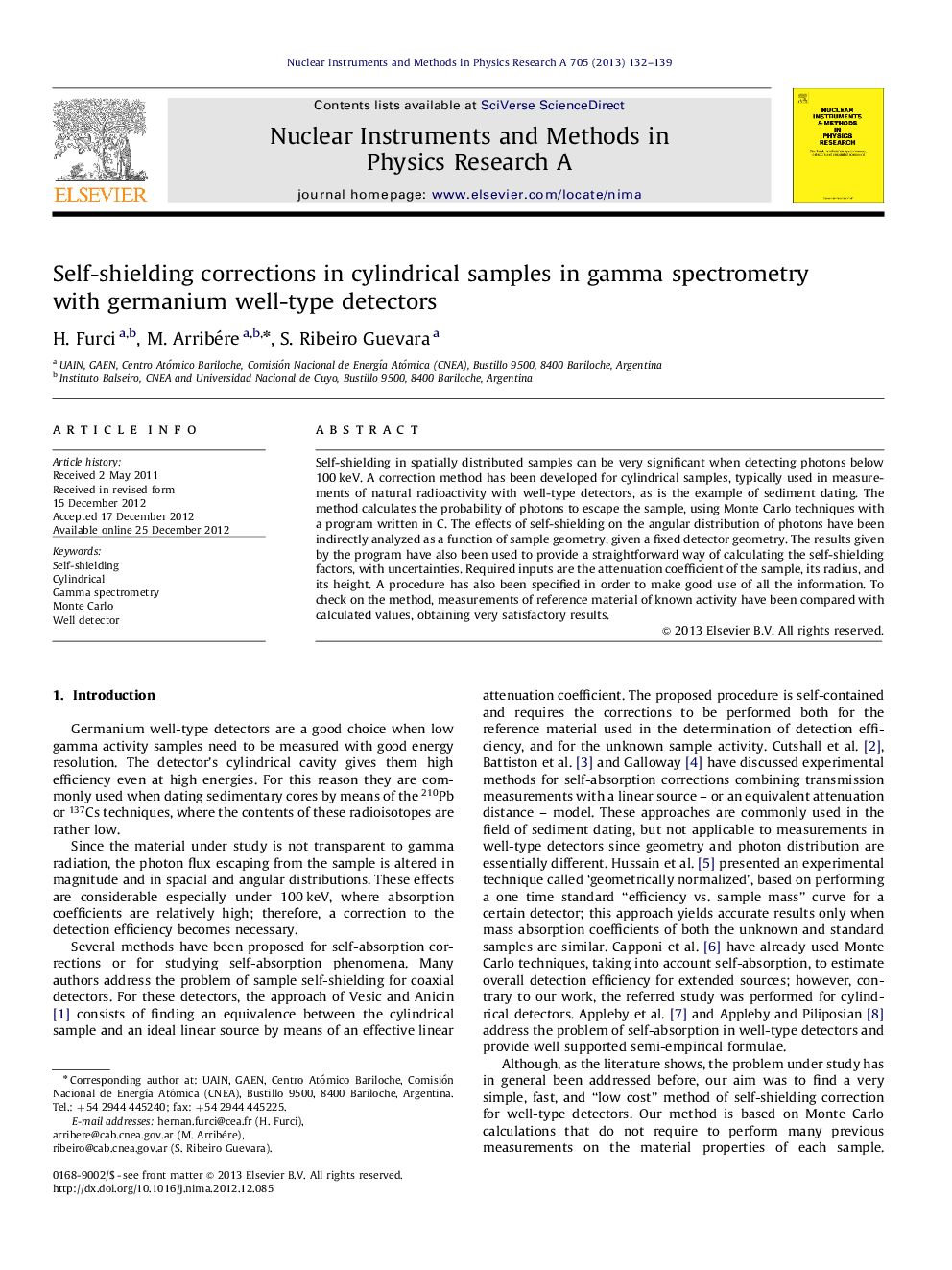| Article ID | Journal | Published Year | Pages | File Type |
|---|---|---|---|---|
| 8180126 | Nuclear Instruments and Methods in Physics Research Section A: Accelerators, Spectrometers, Detectors and Associated Equipment | 2013 | 8 Pages |
Abstract
Self-shielding in spatially distributed samples can be very significant when detecting photons below 100Â keV. A correction method has been developed for cylindrical samples, typically used in measurements of natural radioactivity with well-type detectors, as is the example of sediment dating. The method calculates the probability of photons to escape the sample, using Monte Carlo techniques with a program written in C. The effects of self-shielding on the angular distribution of photons have been indirectly analyzed as a function of sample geometry, given a fixed detector geometry. The results given by the program have also been used to provide a straightforward way of calculating the self-shielding factors, with uncertainties. Required inputs are the attenuation coefficient of the sample, its radius, and its height. A procedure has also been specified in order to make good use of all the information. To check on the method, measurements of reference material of known activity have been compared with calculated values, obtaining very satisfactory results.
Related Topics
Physical Sciences and Engineering
Physics and Astronomy
Instrumentation
Authors
H. Furci, M. Arribére, S. Ribeiro Guevara,
